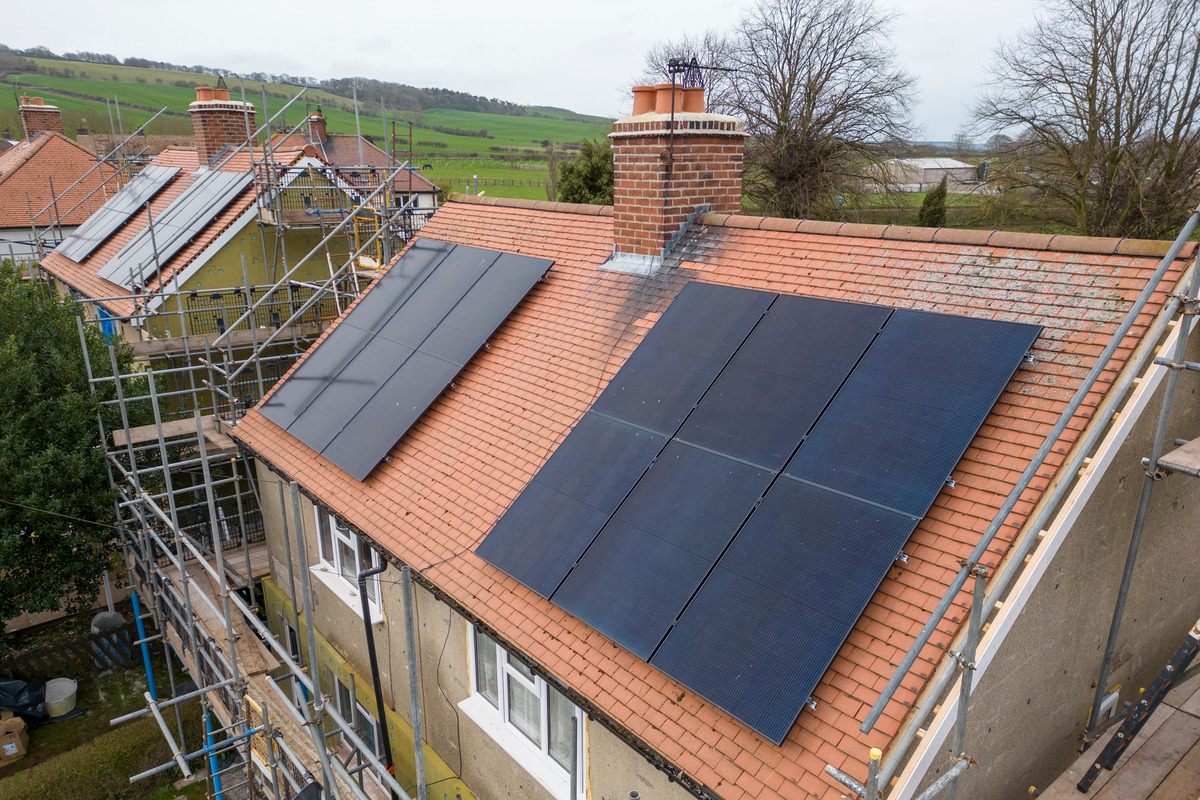
Steve Ellard is director of assets and sustainability at Yorkshire Housing
Bridging the energy-efficiency gap: addressing rural home inequalities
This Rural Housing Week, we must commit to improving energy efficiency in our rural homes, writes Steve Ellard
When it comes to energy efficiency, a stark divide exists between the 9.7 million people in England that live in rural homes and those that live in towns and cities.
According to the Centre for Rural Economy, 12% of rural housing stock in England is social housing. Most are ex-local authority stock that are inherently older and built in such a way that improving energy performance can be complex and costly, and connecting them to the gas network is often impractical or impossible.
A report commissioned by the Rural Services Network last year showed that energy costs in rural areas are 10% higher, rising to 17% in Yorkshire and the Humber. That’s hugely significant at a time when we’re still grappling with high inflation, spiralling food costs, rising interest rates and rent increases.
This disparity isn’t just down the physical characteristics of rural homes. They often rely on expensive heating systems, such as oil, coal or storage heaters. This reliance on alternative fuels often results in higher energy costs, leading to a greater fuel poverty gap.
It’s no surprise that most of our energy-efficiency and retrofit work is taking place in rural villages. It’s easy to see why when, nationally, almost 20% of rural homes are classed as very energy inefficient, while in urban areas only 2.4% of homes are classed as such.
Closing the energy-efficiency gap between rural and urban homes requires significant investment.
Research by Housemark shows that while the latest round of the Social Housing Decarbonisation Fund (SHDF) is welcome news, there’s only enough available funding to improve the energy efficiency of 7% of the 1.3 million social housing properties in England that don’t have an energy performance certificate (EPC) rating of C.
Also, the £778m allocated, works out at £8,644 per home. This is well below the £14,600 that landlords expect energy-efficiency work to cost per property.
Landlords need more funding to carry out the necessary retrofitting measures and improve energy efficiency in rural homes. It’s also worth pointing out that high inflation is significantly increasing the cost of energy-efficiency projects. A whole-house deep retrofit programme, ironically, simply isn’t sustainable anymore and in real-terms funding is worth less because of inflation.
“If we really want to address the energy-efficiency inequalities that rural households face, landlords and policymakers should look at taking a fabric-first approach”
Additionally, skill shortages in the construction and retrofitting industry can slow down progress. Addressing these shortages and promoting training programs will ensure a steady workforce capable of implementing energy-efficiency improvements effectively.
So, what can landlords do?
The government has set a target for social housing providers to attain an EPC rating of C for rented properties by 2035 and as soon as 2030 for ‘fuel-poor’ households. At Yorkshire Housing, we’re well on our way to making this happen. We’re already improving the energy performance of the 5,000 homes we have that are below band C.
We’ve almost completed our latest SHDF-funded project in the village of Staxton. Later this year we’ll start work on our biggest SHDF project to date.
We’ve also just given the green light to install solar panels on 68 properties in Huddersfield thanks to funding from the West Yorkshire Combined Authority’s SHDF booster fund. It’s part of a planned investment of £30m over the next five years on retrofit and heating solutions.
However, improving the energy efficiency of our ‘leakiest’ homes can be costly and require specialist expertise, which can make some landlords question whether it’s worth upgrading these homes at all.
At Yorkshire Housing, we’re proud to have a mixed portfolio and our rural homes are an important part of who we are. We know that the availability of affordable housing underpins the vitality and sustainability of rural communities.
A shortage of affordable housing in rural areas can lead to difficulties recruiting and retaining employees, young people and families forced to move away from their local areas, overcrowding, long waiting lists for social housing and homelessness.
If we really want to address the energy-efficiency inequalities that rural households face, landlords and policymakers should look at taking a fabric-first approach, which can have several benefits. This approach emphasises maximising the performance of building materials before considering installing new heating systems. By focusing on improving the building’s fabric, such as insulation and air sealing, energy efficiency can be significantly enhanced.
“By prioritising energy-efficiency improvements, we can enhance the well-being of rural households, reduce fuel poverty and contribute to a more sustainable future for everyone”
This approach can be more cost effective in the long run. Well-insulated walls, roofs and floors minimise heat loss during winter and heat gain during summer, reducing the need for excessive heating or cooling. This leads to lower energy consumption, reduction in CO2 emissions and a more sustainable living environment.
There’s also benefits to people’s health, especially vulnerable people such as older people or those with respiratory conditions. Reducing drafts, cold spots and moisture issues creates a more consistent temperature and improves air quality, while also ensuring adequate ventilation is in place to reduce the likelihood of cases of damp and mould.
Addressing the energy-efficiency inequalities of rural homes and overcoming challenges related to traditional features, alternative fuels and funding shortages requires a concerted effort by landlords, policymakers and the community.
By prioritising energy-efficiency improvements, we can enhance the well-being of rural households, reduce fuel poverty and contribute to a more sustainable future for everyone.
Steve Ellard, director of assets and sustainability, Yorkshire Housing
Sign up for our asset management newsletter
Already have an account? Click here to manage your newsletters












